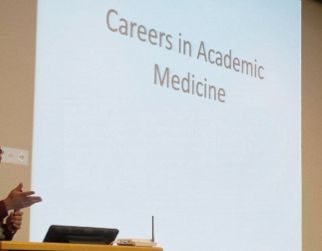Letting Academic Physicians Off The Hook.
Posted on | January 3, 2020 | 1 Comment

Mike Magee
In 2004, when I read Dr. Marcia Angell’s book, “The Truth About the Drug Companies: How They Deceive Us And What To Do About It”, I agreed with everything she wrote. How couldn’t I? At the time, I had a front row seat inside the largest pharmaceutical company in the world and managed a substantial external-facing portfolio that included “Medical Relations.”
But what was equally obvious to me was a glaring omission. My “front row seat” not only revealed the underbelly of Pharma coercion, but also how willing were many of the top physician leaders in both academic and organized medicine to participate.
If this was a secret, it was hiding in plain sight. In 1966, Henry Beecher couldn’t have been clearer when he wrote in the New England Journal of Medicine, “Every young man knows that he will never be promoted to a tenure post, to a professorship in a major medical school, unless he has proved himself as an investigator. If the ready availability of money for conducting research is added to this fact, one can see how great the pressures are on ambitious young physicians.”
What I knew to be true then, and what is even truer now in our modern entrepreneurial gold rush built around genomics and stem cells and personalized therapies, is that the Medical-Industrial Complex’s strangle hold on our inefficient and often ineffective health delivery system is based on an integrated career ladder that moves from academia to industry to government and back again.
As Dr. Beecher correctly noted, publications and presentations are both the admission ticket to the ground floor of medical academic success, and the escalator to a higher perch in a gilded cage brimming with direct and indirect rewards.
To sustain such a system requires a wide range of collaborators and benefactors. To succeed, one must, at times, turn a blind eye. One does not “go along” unless one “gets along”. Publications are followed by several rounds of amplification, first at CME meetings and association panels, then through NIH grants and inclusion in government or industry advisory boards, and finally with an invitation for membership within national associations, foundations and governmental science boards.
That our medical science system is chronically rigged has led to a number of charges of late. Most have involved NIH funding where the claim is that grants are over-weighted toward well-known investigators and blue-chip institutions. For example 40% of the dollars are awarded to 10% of the grantee institutions.
But what about bias in the selection for publication or for a slot at the podium of a prestigious meeting? An October 10, 2017 article in the Proceedings of the National Academy of Sciences sheds some light on these questions. The authors are luminaries in the computer science field and were asked to jury submissions for the 10th International Machinery Conference on Web Search and Data Mining (WSDM 2017). In the academic computer science world, “research typically appears first and often exclusively in conferences rather than in journals.” And WSDM 2017 is one of the largest meetings.
Historically, only 15% of submissions to the WSDM are chosen. The process involves a large group of expert reviewers who each read and grade four submissions using a system that allows them to enter “bids” which are necessary to be in the running at all for a spot. Reviewers then grade the submitted bids. Those entered and possessing the highest marks prevail.
The WSDM has always used a single-blind reviewing process. This means that the reviewers know the names and affiliations of those submitting a proposal, but the potential presenter never knows the name or affiliation of his or her reviewer. JAMA employs a single-blind review process in peer-reviewing their journal submissions. At the time the authors were beginning their WSDM 2017 deliberations, the question was raised whether the organization should move to a double-blind review. In this method authors and reviewers and their affiliates are anonymous to each other. That is reviewers must judge purely on the merits of the submission without considering the source.
The authors, Andrew Tomkins and Min Zhang, elected to design a study using the 2017 process to inform recommendations for the 2018 conference. They created two parallel reviewing processes and split reviewers. 974 were double-blind and 983 were single blind. In analyzing the results, they detected statistically significant bias as follows:
- Single-blind reviewers who knew authors and their institutions voluntarily restricted bids. That is, they held back bidding keeping larger numbers from competing for spots on the program. In all they had 22% fewer entry bids than did their blinded counter-part reviewers.
- Single-blind reviewers in assessing those fewer bids they had placed in the running, were significantly more likely to recommend famous authors and those from famous institutions for acceptance.
As a result, the authors recommended that WSDM 2018 move to a fully blinded review process.
Tags: aamc > academic medicine > coi > Conflict of Interest > henry beecher > medical-industrial complex > NIH
Comments
One Response to “Letting Academic Physicians Off The Hook.”



January 4th, 2020 @ 6:32 am
[…] This is only a snippet of a Health Article written by Mike Magee Read Full Article […]